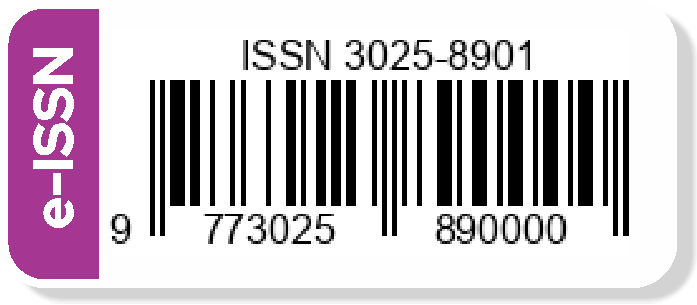The Impact of Social Media on Mental Health Among University Students
Keywords:
Social Media, Mental Health, College StudentsAbstract
The Use of Social Media in Student Life. Social media has become an important element in the lives of college students in today's digital age. Although it facilitates communication and access to information, excessive use of social media can have adverse effects on mental health. This study aims to evaluate the effect of social media use on college students' mental state, especially with regard to anxiety, depression, and self-esteem. The method used in this research is Literature Review Study. Literature searches were conducted on national and international journals published in the last ten years, focusing on issues such as anxiety, depression, loneliness, and self-image disorders. The review showed that excessive use of social media can trigger mental health disorders. However, on the other hand, social media can also provide psychosocial benefits such as emotional support and social connectivity when used in a positive and controlled manner and showed a significant relationship between frequency of social media use and levels of anxiety and depression. In addition, social media use that tends towards social comparison was also found to have a negative impact on students' self-esteem. These results suggest the need for awareness and education on how to use social media healthily as well as the importance of psychosocial support for university students.
References
Listed in alphabetical order (A-Z) of author’s last name, year. Title of the Article. Journal’s Title, Volume(issue), pp. page-page
Aparna, K., Nair, M.K., 2016. Incorporating Stability and Error-based Constraints for A novel Partitional Clustering Algorithm. International Journal of Technology, Volume 4, pp. 691–700
Berawi, M.A., 2004. Quality Revolution: Leading the Innovation and Competitive Advantages. International Journal of Quality & Reliability Management, Volume 21(4), pp. 425–438
Bruker, 2005. APEX2, SAINT and SADABS. Bruker AXS Inc., Madison, Wisconsin, USA
Chung, M.T., Quang-Hung, N., Nguyen, M.T., Thoai, N., 2016. Using Docker in High Performance Computing Applications. In: IEEE Sixth International Conference on Communications and Electronics (ICCE), pp. 52–57
Gang-Ji, Z., 2008. Hydrodinamics and Water Quality, Modeling Rivers, Lakes, and Estuaries. Wiley-Interscience, John Wiley & Sons, Inc., Hoboken, New Jersey, USA
Gromacs Manual 4.5.4., 2011. What and Why Gromacs? Available Online at: ftp://ftp.gromacs.org/pub/manual/manual-4.5.4.pdf, Accessed on December 22, 2016
Kusrini, E., Saleh, M.I., 2009. Luminescence and Structural Studies of Yttrium and Heavier Lanthanide-picrate Complexes with Pentaethylene Glycol. Inorganic Chimica Acta, Volume 362, pp. 4025–4030
Mamat, M., Kusrini, E., Yahaya, A., Hussein, M.Z., Zainal, Z., 2009. Synthesis and Characterization of Zn-Al-Anthranilate Nanocomposites. In: Proceedings of the 25th Regional Conference on Solid State Science and Technology 2009, Perlis, 2 December, Malaysia
Mettam, G.R., Adams, L.B., 1994. Introduction to the Electronic Age. In: Jones, B.S., Smith, R.Z. (Eds.), E-Publishing, Inc. New York, pp. 281–304
Rester, U., 2008. From Virtuality to Reality—Virtual Screening in Lead Discovery and Lead Optimization: A Medicinal Chemistry Perspective. Current Opinion in Drug Discovery & Development, Volume 11(4), pp. 559–568
Stillinger, F.H., Rahman, A., 1974. Improved Simulation of Liquid Water by Molecular Dynamics. The Journal of Chemical Physics, Volume 60(4), pp. 1545–1557
Downloads
Published
How to Cite
Issue
Section
License
Copyright (c) 2025 Indri Cahyani, Selvia Ayuni, Yulhaini Mahlia, Putri Yunita, Fabriella Fauziah

This work is licensed under a Creative Commons Attribution-ShareAlike 4.0 International License.











